Thinking Diary: The Concept of a Performance Diary for Executive Function Strategies

Recently, I read an interesting article written by Alan Shipnuck on the pro-golfer, Luke Donald, who rose to success in spite of experiencing setbacks. The author attributed Luke Donald’s success to a performance diary that he began to keep as a tool to help him improve his focus to bring back the mojo needed to have a winner’s mindset. In order to better himself, Luke Donald trained with performance coach Dave Alred, whose specialty is coaching athletes to improve their decision-making skills which are essential for performing under pressure.
Here are some of the excerpts from Alan Shipnuck’s article that made a whole lot of sense to me:
“Once branded as a player whose inability to win symbolized what’s wrong with pro golf, Luke Donald is closing in on No. 1 thanks to an exhausting new regimen and a diary he keeps to motivate and challenge himself….“Defy convention” — Diary entry of Luke Donald, … on the eve of the Masters. It is a simple black binder, stuffed with a daily calendar the likes of which can be purchased for a couple of bucks. What makes the binder priceless is the hard-earned knowledge it contains and the self-belief that is etched onto the pages in tiny, tidy handwriting. Luke Donald calls it his performance diary. Every evening he writes down three goals for the next day…..”
This article inspired me to write about my work with patients with ADHD, TBI, and concussion. This is called cognitive rehabilitation or cognitive retraining in which I have been using a “Strategy Notebook”; a parallel to the concept of a performance diary.
Working with individuals with executive dysfunction or cognitive impairment resulting from ADHD, TBI, or concussion requires explicit instructions regarding learning to think differently. During the rehabilitation process I advise students and adults to make practice-based-learning their business. Just as Luke Donald did, I expect my patients to embody a rigorous regimen of intense cognitive routines intertwined with a daily process of metacognitive introspection.
It is ironic, but true that people who I work with are expected to change behaviors and thinking processes using guidance and behavioral redirection through semantics. I find that when you ask someone to change their thought process and expect them to implement novel techniques to shift their thinking, they need practice. The following higher-order cognitive abilities are needed to bring about change:
- Reflecting
- Evaluating
- Generating strategies
- Implementing appropriate strategies
- Monitoring outcome
- Self-reporting
These steps require an incredible amount of memory for novel learning, a high level of motivation, and a superb introspective ability (or self-evaluation ability). What if the nature of your cognitive deficits or the impairment itself is such that it does not permit you to retain the gist of the message to bring about change? Because of metacognitive impairments resulting from executive dysfunction, I always employ a Strategy Notebook for my students and patients to take home. Here is a template that I use to create a message in the strategy notebook which I find effective and essential:
Date:___________ Topic/Title: _____________________
- Goals for the day:
- Whys & Hows of the Goals
- Description of the exercise:
- Estimated time:
- Actual time:
- Estimated accuracy:
- Actual accuracy:
- Estimated complexity:
- Actual Complexity:
- Performance feedback:
- Lessons learned:
- Ways to remember what has been learned:
- Ways to implement what has been learned:
So, as you can see, I use a performance diary of a different kind. In my Strategy Notebook the point of training is summarized and organized by me with room for prompted introspection. The purpose is for the patients to retain the succinct and condensed version of the idea or the lesson learned. Finally, once reviewed and rehearsed several times, the patient can hope to bring about changes in thinking, attitude, and ultimately behaviors.
